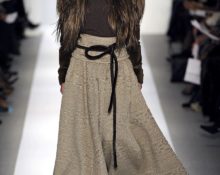
Children's jackets (photo) usually have a high degree of thermal protection and allow the child to feel comfortable even in severe frosts. When choosing a jacket, it is important to pay attention to several aspects:
- The insulation should be light and warm. A good option is goose down or modern synthetic materials.
- The choice of insulation affects how warm the jacket will be. Natural insulation is usually warmer, but synthetic insulation is more durable and easier to maintain.
- The hood should reliably protect the child’s head and ears from the wind, and the cuffs on the sleeves and along the bottom of the jacket should prevent snow from getting inside.
- A comfortable hood and cuffs will help keep you warm even in strong winds and frost.
- Fasteners and zippers must be of high quality, easy to fasten and unfasten so that the child can handle them independently. High-quality fasteners extend the life of the jacket and make the process of dressing and undressing easier.
How to choose a park for a child
Winter children's parka (photo) is an excellent choice for those who are looking for warm and stylish winter clothes for their child. Parkas protect well from wind and frost, and also have convenient pockets and a hood.

A long parka provides better protection from wind and cold, but a short model will be more comfortable on the move. The choice of parka length depends on the child’s individual preferences and the climatic conditions of the region.
Choose a parka with high-quality insulation and soft lining to keep your child warm and comfortable. A lining made of natural materials will ensure comfort and ease of wearing.
The parka should be functional: have a sufficient number of pockets, a comfortable hood and reliable zippers. Functionality affects the ease of use of parkas in everyday life.
Mistakes when choosing a jacket or parka for a child
Often parents buy clothes to suit their height, hoping that the child will grow up and the clothes will be just right. However, clothes that are too large will fit loosely on the child, which can cause inconvenience and discomfort while wearing.
On the other hand, clothes that are too small will restrict the child’s movements, which will also lead to discomfort. Choosing the right size is the key to comfort and ease of wearing.
In severe frost conditions, synthetic insulation may not be warm enough, which will lead to hypothermia in the child.
On the other hand, in warm winters, natural insulation can cause overheating. The choice of insulation should be made taking into account the climatic conditions of your region.
Some parents buy winter clothes for children without trying them on, relying only on the size chart. However, each brand has its own characteristics of fit and sizing, so trying on before purchasing is a mandatory step.
Poor-quality zippers and fasteners can fail after just a few weeks of active use, making clothing uncomfortable to wear.
The lack of convenient pockets, a hood or internal cuffs on the sleeves can create additional inconvenience while wearing.
Pay attention to all the details when choosing winter clothes for your child to ensure comfort and coziness during the cold season.
Practical tips for choosing winter clothes for children
Choosing winter outerwear for children is a responsible process. Here are some practical tips for parents:
- Buy clothes with a small margin in size so that your child can wear them all season.
- Give preference to natural fabrics and insulation; they retain heat better and allow air to pass through.
- Pay attention to the quality of seams and fasteners, this affects the durability of the clothing.
- If possible, try on clothes before purchasing or choose trusted brands with accurate sizing charts.
By following these recommendations, you can choose high-quality and comfortable winter clothes for your child, which will protect him from the cold and wind in the winter season.


 0
0





